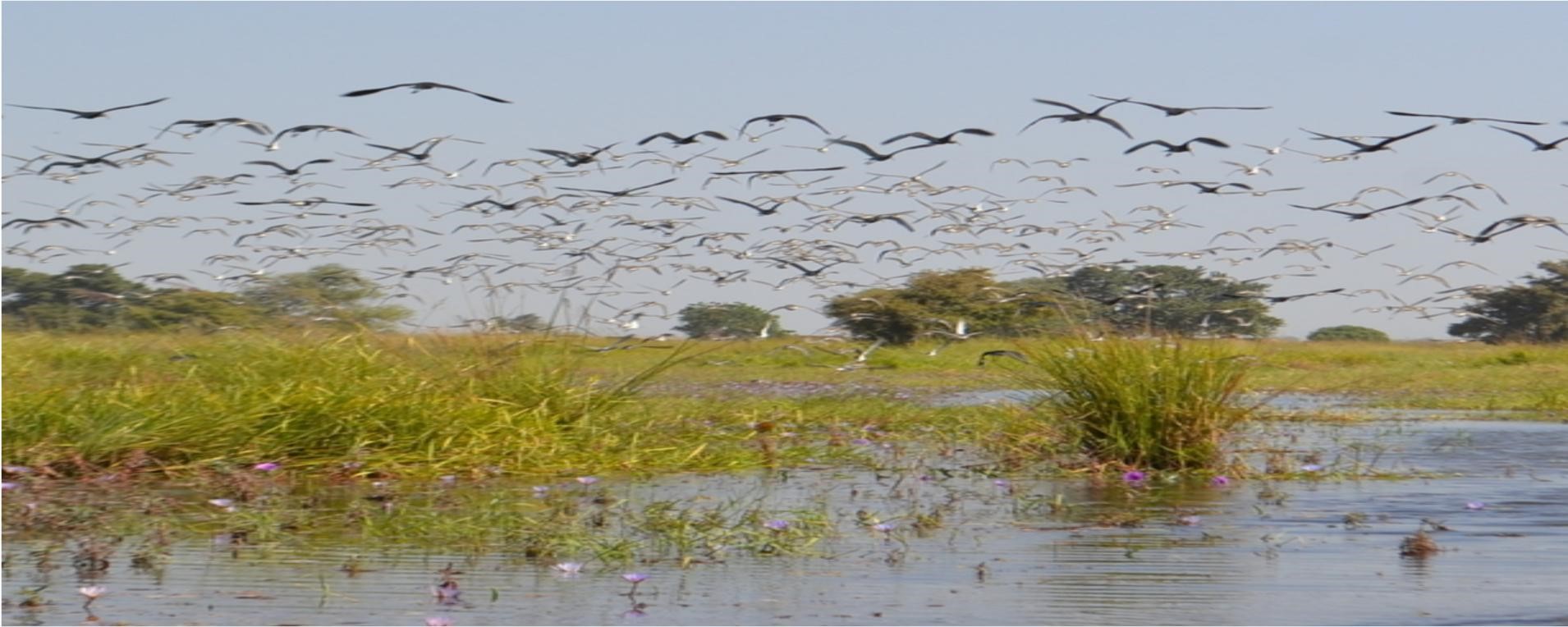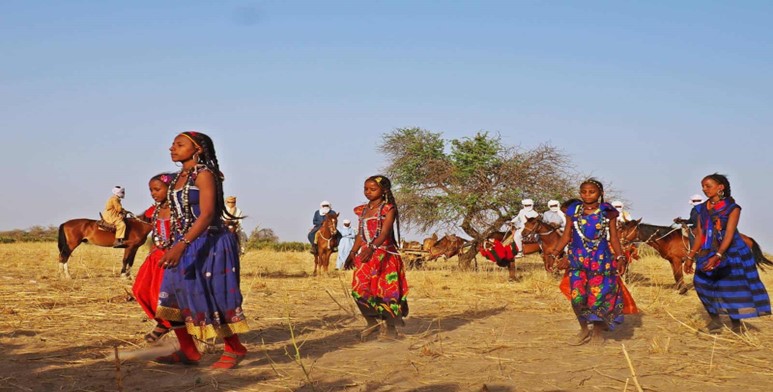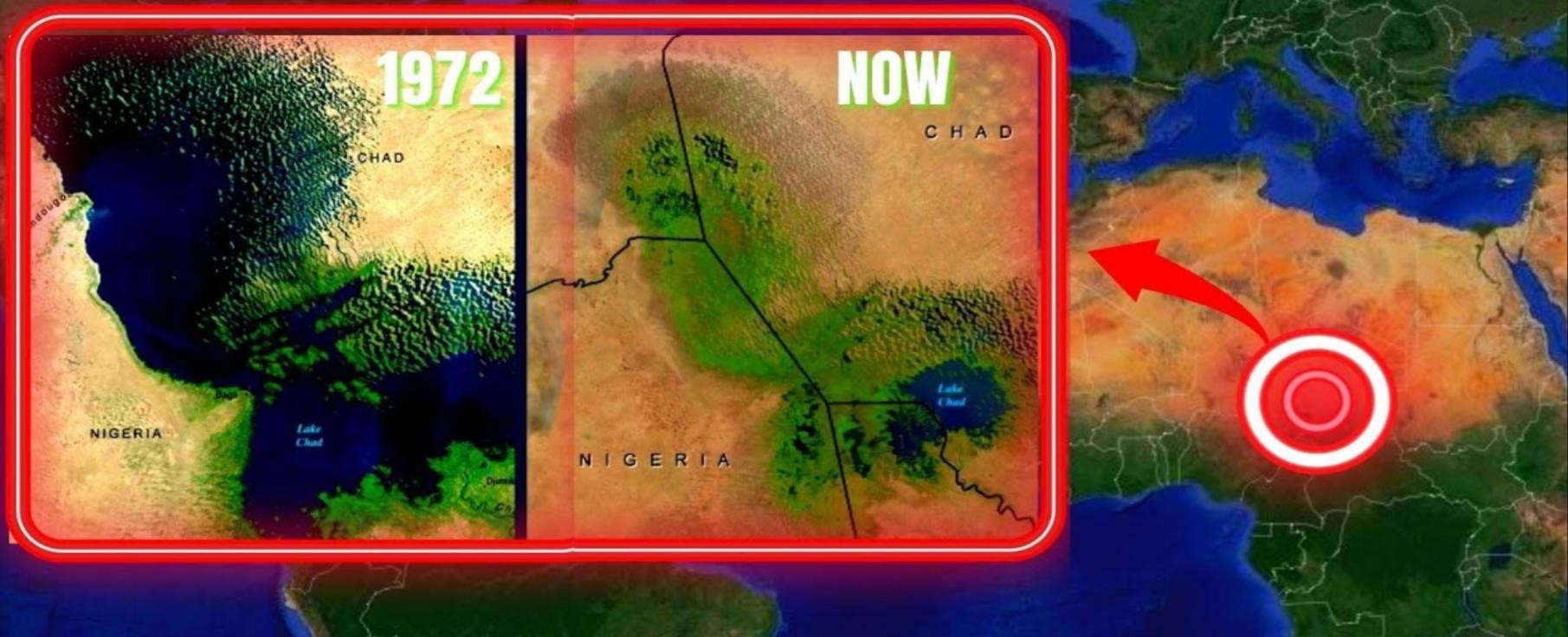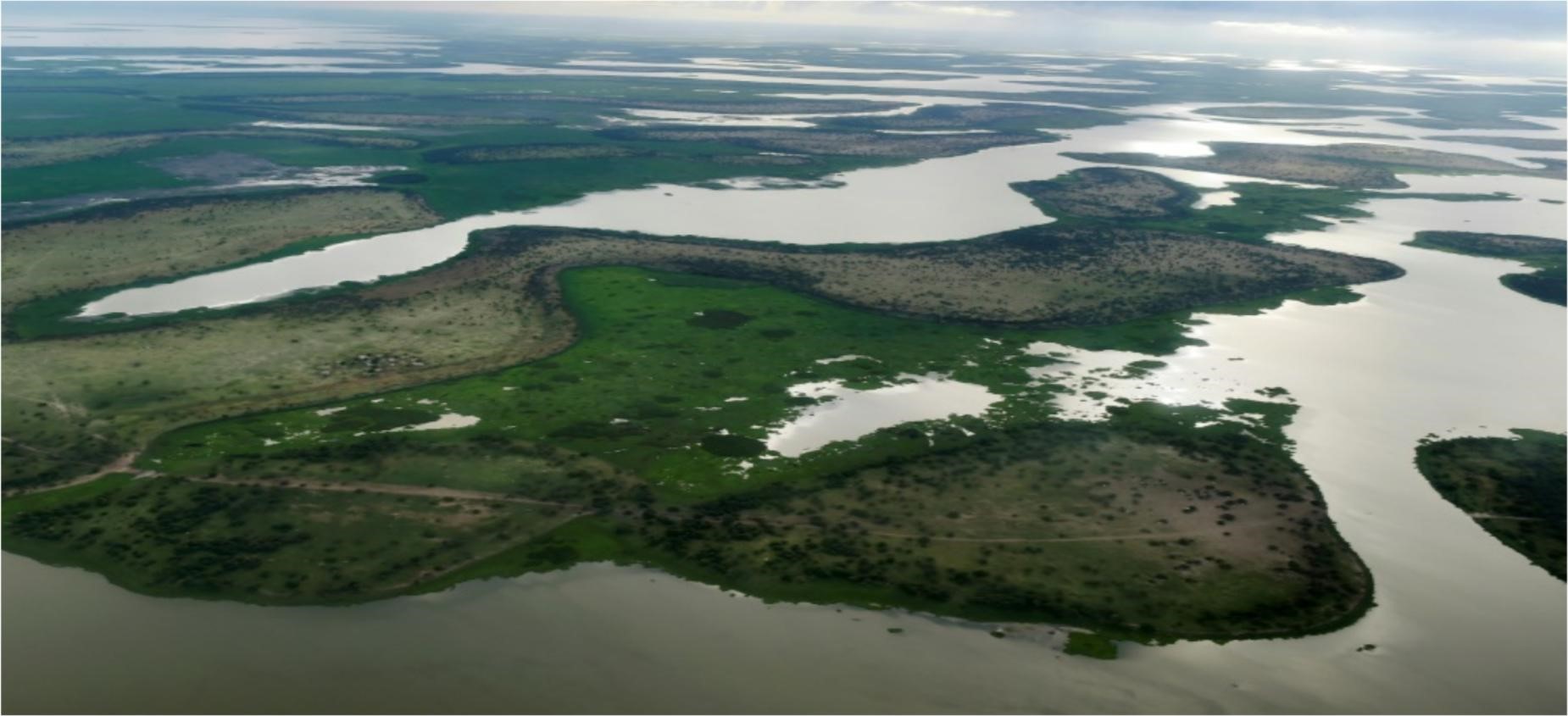LAKE CHAD CULTURAL LANDSCAPE
The Lake Chad Cultural Landscape, spanning Chad, Cameroon, Niger, and Nigeria, covers approximately 17,000 square kilometers within the Sahelian belt. This vast archipelago boasts diverse wetland ecosystems, cultural heritage, and thriving biodiversity, reflecting a unique and enduring harmony between humanity and nature spanning over a millennium. Lake Chad, a vital freshwater reservoir, has sustained life in this arid environment since ancient times, dating back to the Palaeolithic era. Surrounded by the Sahara desert, this region is a treasure trove of history, tradition, and awe-inspiring natural beauty.
Geography and Topography
The Lake Chad Cultural Landscape, spanning 17,000 square kilometers across Chad, Cameroon, Niger, and Nigeria, showcases a unique and diverse ecosystem of islands, wetlands, and mudbanks encircling Lake Chad. This endorheic lake heavily relies on the Logone Chari and Komadougou watercourses for its water supply, with seasonal fluctuations and varying rainfall patterns creating a remarkable north-south gradient. With temperatures ranging between 35°C and 40°C, the region boasts a fascinating blend of habitats that nurture a wide array of flora and fauna.
The landscape's remarkable features include a central belt of swampland dividing the lake into northern and southern sections, teeming with marshes that support diverse plant and animal life. The surrounding flooded savannas flourish during the wet season, while vast floodplains emerge along the banks during the dry season.
Within the Lake Chad Cultural Landscape lies the Nigerian section known as the Chad Basin National Park , covering 2,258 square kilometers in Borno and Yobe states. This park comprises three distinct sectors, each offering unique ecosystems and biodiversity.
Chingurmi-Duguma Sector: This sector presents a captivating landscape dominated by an Acacia-Balanites woodland complex, interwoven with dense stands of elephant grass (sorghum aethiopicum) in layered formations.
Bade-Nguru Wetlands: Encompassing vital wetland areas, this sector serves as a crucial habitat for a diverse range of plant and animal species, particularly water birds and other wildlife.
Bulatura Oases: Situated amidst the sand dunes, the Bulatura Oases span 92 square kilometers and feature fertile interdunal depressions known as oases, adding to the area's unique charm.
Communities and Adaptability
Despite challenges posed by the Sahelian climate, with a brief rainy season and extended dry season, the communities residing along the riverside have demonstrated remarkable adaptability. They skillfully navigate the demands of their environment for survival, creating a testament to the enduring harmony between humanity and nature in the Lake Chad Cultural Landscape.
Through its diverse landscapes and rich biodiversity, the Lake Chad Cultural Landscape and Chad Basin National Park stand as remarkable treasures of natural and cultural heritage, deserving recognition and preservation.

Biodiversity
The Lake Chad Cultural Landscape's diverse eco-regions house an abundance of wildlife, including diverse water bird species like herons, egrets, ducks, and flamingos. Amphibians, reptiles, and small mammals also thrive here, alongside iconic species like hippopotamuses, Nile crocodiles, and Nile monitor lizards. Situated along the Central African Flyway, the lake provides a crucial resting spot for millions of migratory birds during their long journeys between Europe, Asia, and Africa. The lake's waters sustain over 120 fish species, crucial for supporting local communities' livelihoods.
Archeological History
The region holds a rich archeological history dating back to the 5th century, with evidence of Sao settlements and their remarkable civilization. Excavations have revealed fortified cities with grand walls, showcasing the Sao people's advanced agricultural practices and skilled craftsmanship. These remnants offer valuable insights into the region's ancient cultural legacy.
Historical Significance of Trade
Lake Chad's strategic position along trans-Saharan trade routes made it a vital link connecting sub-Saharan Africa with the Mediterranean. The lake's fertile lands and abundant water resources supported thriving societies, and its products reached markets as far as the Atlantic coast, Cameroon, and Nigeria. The region's history is a testament to the economic and cultural exchanges fostered by trade.

Cultural Heritage
The Lake Chad Cultural Landscape is home to resilient communities, such as the Barma, Babalia, Boulaian, Haoussa, Mouloui, Kanembou, and Kotoko peoples. These communities have preserved ancestral traditions and cultural practices for generations, exemplifying the harmonious coexistence between humans and nature since ancient times. Festivals like the Bade Fishing and Cultural Festival showcase this cultural heritage through traditional fishing techniques and colorful celebrations.
Beyond its cultural and historical significance, the Lake Chad region plays a crucial contemporary role. As the largest lake in the Chad Basin, it sustains over 30 million people through fishing, agriculture, and livestock activities, supporting the local economy. Additionally, the region's archaeological discoveries, such as the Toumai skull and Dufuna canoe, connect us to our evolutionary past and ancient civilizations.

Problems and Challenges
The Lake Chad Cultural Landscape faces challenges, including the impacts of terrorism by groups like Boko Haram, leading to casualties and displacement. However, the most critical challenge is the shrinking of Lake Chad due to climate change, water overuse, and population growth, causing acute water scarcity and ecological imbalances.
Preservation and Revitalization Efforts
Preservation efforts are underway through collaborations between governments, UNESCO, and the Lake Chad Basin Commission (LCBC). The BIOsphère et Patrimoines du Lac Tchad (BIOPALT) project aims to designate the region as a World Heritage site, raising awareness and promoting tourism and economic growth. Despite challenges, these initiatives offer hope for safeguarding the region's natural and cultural diversity for future generations.

